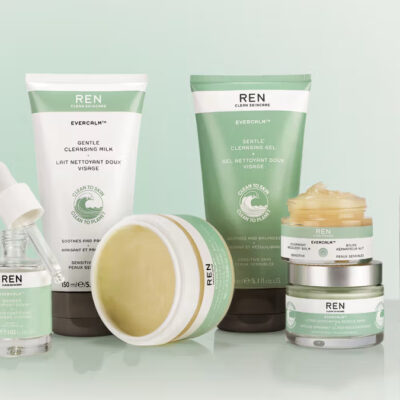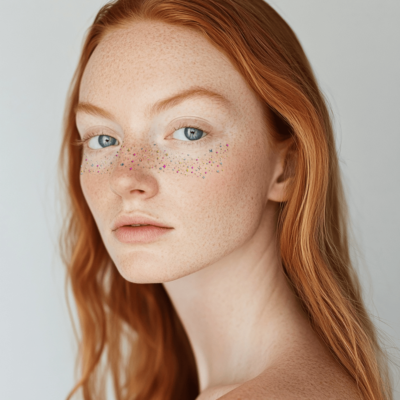
With Traditional PR Tough, What Awareness Strategies Are Indie Beauty Brands Pursuing?
The idea for the latest edition of our ongoing series posing questions relevant to indie beauty comes from Margarita Arriagada, founder of the luxury beauty brand Valdé and former chief merchant at Sephora. As she’s gone about trying to raise awareness for her business through traditional media, she says she’s discovered that “articles are primarily based on current trends to draw affiliate traffic.”
Frustrated by the pay-to-play environment, Arriagada wonders, “Shall we be shifting our investment? What is working on getting press beyond TikTok trends, new launches and/or influencers being flown to Dubai?” And she asserts, “It needs to be talked about because many of us are at a loss on what the future holds in this space.”
To get beauty brands talking, we asked 16 of them the following question outlined by Arriagada: In light of beauty media being largely a pay-to-play environment, have you shifted your PR budget and/or strategies?
- Aaron Hefter CEO, Imaraïs Beauty
When we launched Imaraïs Beauty, we engaged a top U.S. agency to manage our PR strategy, but I quickly realized like Margarita that things were not as easy as I thought. Even with a trending product, ongoing PR is extremely expensive and difficult to sustain. As the CEO of a new brand in such a competitive category like beauty, I am always analyzing ROI.
Being a global brand, our PR extends around the globe, and I find that I have started to put a focus on PR budget and strategy in key international markets like the UK, Europe and Dubai because the ROI has been better in a less crowded brand landscape and there are more opportunities for greater media coverage. In many of these markets, we are the very first prestige ingestible beauty brand they have ever seen, and that is a story in its own right.
- David Gaylord Co-Founder and CEO, Bushbalm
Getting overall awareness and buzz for your brand takes a lot of time. At Bushbalm, we've grown from grassroots initiatives to a slightly larger PR budget. Getting press as an early brand isn't necessarily a guarantee. You need to do something unique and, frankly, you need to prove yourself. We started with our local publications, then moved up as opportunities became available.
In 2023 and beyond, I believe you need to do more than a standard product launch. It's a really hard spot to be a new brand right now with the old playbook of buying impressions. Now, it's a lot slower, but more authentic in my opinion, with more unique product lines, in-person events, strong community building, etc.
For instance, last fall we did an experiential product launch, where we sent editors to try our Hydrogel Vajacial Mask at the V-Spot in NYC. This product has now sold out, and that event secured four articles. These types of experiences and events are where we are pivoting our PR budget this year.
- Sandra Velasquez Founder, Nopalera
After almost two years of working with our publicist, The Avana House, which has done an incredible job of getting us into every magazine, we can see that the real needle movers are not magazines. Major TV networks are what have the biggest impact.
So, we are shifting our strategic efforts to go after more of those big impact media players. I am seeing a return to more old-school ways of marketing like billboards and commercials.
- Mark Veeder Co-Founder, Sk*p
With the decline of the publishing industry and the reduction of true media outlets, we have shifted our focus to more grassroots ways to attract attention and build brand awareness, including experiential moments where influencers, press, retailers and consumers get to interact with us on an authentic and very personal way.
These moments include one-on-one trainings for retail partners/shoppers, pop-up brand activations where our target consumers live, work, learn and play, and collaborations with like-minded brands both in and out of our industry.
- Bianca Rush Founder, Sassy Hair Cap
I noticed that a portion of media PR is connected to pay-to-play, meaning the more margin the media gets, the more your visibility grows due to the type of media you're featured in. This is a newer type of affiliate traffic, and while I don't feel it's necessarily a terrible thing, it is something that beauty founders should be aware of because they will be giving up profit in return for visibility.
How this has affected my budget is that it has made me more conscious of lowering my product costs so that I can allocate a portion to affiliate marketing, and it has also pushed me to focus my attention on organic marketing strategies such as inviting customers to become ambassadors to increase sales, segmenting email audiences based on customer behavior and interest to grow my average order value, pitching to speak on podcasts to grow our brand awareness, and looking locally into events happening in our area that our customer avatar would be in attend.
- Ryan Babenzien Founder and CEO, Jolie
Brands that are relying on the traditional PR method are sadly no longer seeing the value it once had. If you think about how people spend their time, so much of it is dominated by spending time on social channels, which have replaced what PR used to do: bring awareness to an audience.
For early-stage brands, getting the word out about the brand and product is critical, but paying to have articles written in magazines or digital outlets that fewer and fewer people pay attention to or are influenced by is a losing strategy.
Leveraging social, not in a paid sense necessarily but in a way that allows the brand/product to be featured and used by customers and people of influence who then create unique content has shown to work for many brands. Brands should not overcomplicate this, and the phrase "fish where the fish are" can summarize where brands need to show up.
- Minara El-Rahman Co-Founder and CEO, Mora Cosmetics
As an independent beauty founder, it is easy to see how pay-to-play works well for beauty brands with unlimited budgets. However, smaller beauty brands can't rely on luck and excellent products to get the beauty coverage they may deserve. Even within the indie beauty space, the brands that get consistent coverage are ones with great PR firms or have founders with editorial backgrounds.
With Mora Cosmetics, we were fortunate to get the press coverage we did initially. I attribute this to researching editors covering beats that make sense for our brand, but also aligning ourselves with fantastic retailers like Thirteen Lune early on, who have championed many BIPOC indie brands and elevated us in terms of press.
Currently, we work with a boutique PR agency on a monthly retainer. While it is a significant line item in our budget, it helps get the word out about our brand in a way we can't do with other marketing channels.
- Kevin Gould Founder and CEO, Kombo Ventures
I definitely have seen media publishers over the past few years move heavily into the affiliate model. It's important for brands to do two things: 1) Lean into it as it's not going away, so make sure you understand how affiliate works and have good partners to work with on it as you’re at a disadvantage if you don't.
2) Get a lot more creative around the way you generate PR that will drive organic write-ups, examples being collabs with influencers that you know press will want to write about, nailing down what your core pillars/pr angles are and making sure you think its differentiated enough to generate hits, and getting much more in the weeds as a founder in generating PR. Build your own relationships by reaching out to writers and not just relying on outside agencies, etc.
- Shannon Davenport Founder, Esker
Our PR agency Project MM specializes in building long-term relationships with beauty brands and editors. Traditional PR has, over the long haul, worked really well for us and driven a lot of brand awareness as well as sales.
However, we've definitely noticed an increase in the use of affiliate links and collaborations with commerce teams at publications. Although we do incorporate affiliate links into our pitching strategy, we've found that consistent pitching and relationship-building with editors is the most impactful way to generate meaningful PR coverage.
An upside of affiliate linking is definitely the feedback loop with retailers. Media outlets often have affiliate relationships with some of the national retailers we work with like Anthropologie or Amazon, so pushing traffic to those sites benefits the retailer relationship as well.
- Kari Asselin Founder, Om
At the end of 2022, we took a step back and evaluated our spending critically to ensure we were seeing results from paid channels trend in a positive direction.
As a result of this inward look, in the first half of 2023, we’ve decided to focus on organic and relational marketing tactics, while doubling down on the paid channels where we see the highest conversions.
This meant shifting our PR budget into channels that perform strongly for us in an effort to be extremely intentional and prudent with our marketing budget.
-
The PR landscape as a whole has changed and, with that, we’ve shifted our budgets and strategy toward investing more in social media and influencer marketing.
The rise in short-form content has been a really exciting way for us to engage with our customers and educate them in a way we hadn’t really been able to do with traditional PR efforts in the past.
- Caroline Owusu-Ansah Founder, Luv Scrub
When I started my business, there were no marketing dollars. So, I went ahead to seek mentorship to help me with PR. This cost me nothing and was very effective.
I worked with a mentor at Score that specialized in PR. Score is an organization that has retired executives that volunteers their time to help entrepreneurs. I took advantage because I knew I needed to get the word out. He helped me craft the perfect pitch letter. Three months after working with him, we got our first big story.
Since that story, we have mentioned in the press a lot, and it has all been organic press. We are in our seventh year and still have not paid for any PR. With my product, the pay-to-play feels very unauthentic to me.
I have used my product since childhood, which has been a staple in West Africa for years. It is proven, so something feels off to pay to promote it. I look to organic press and testimonials. It has worked all this time, and it is best for us to stay that way.
- Michelle Ballard Co-Founder and CEO, Miche Beauty
The media landscape has undoubtedly evolved since we launched our brand seven years ago. However, its role in helping scale beauty companies to success remains an integral piece of any brand strategy. In my own experience, I have witnessed how the integration of a robust marketing and public relations strategy can simultaneously accelerate sales and brand awareness.
As media companies continue to integrate paid features into their editorial strategies, it can be challenging for small beauty businesses to match the costs associated with seemingly “guaranteed” media coverage due to tight budgets or lack of funding. However, this should not deter founders from investing in the appropriate public relations strategies for their brand as it supports the longevity of brand relevancy.
For Miche Beauty, we have actually increased our PR budget as a result of post-pandemic consumer consumption shifts. It is our approach to leverage PR to not only continue garnering consumer excitement for our new and existing offerings, but also fortify brand trust through strategic storytelling. We’ve learned that, if consumers aren’t excited about your brand or do not have a clear understanding of your purpose, you’re in trouble.
- Sherrel Sampson Founder and CEO, Canviiy
We like to think of PR as a relationships business. While affiliate links have changed how one interact with some editors, we strongly believe first and foremost every editor desires stories that are timely, uniquely relevant to their readers and willing to feature brands that they believe in.
We engage with our editors to understand these aspects by crafting multiple pitches and angles accordingly. In this sense, PR becomes a two-way conversation with us pitching them as well as them proactively contacting us.
At Canviiy, we have not explored affiliate links, but we are continuing to double our efforts in PR as we respect the unique perspective our editors bring to the beauty industry.
- Malaika Jones Founder and CEO, Brown Girl Jane
We have been fortunate that beauty media and press have not been a pay-for-play environment for our brand. We work to develop ongoing and organic relationships with editors and press and stay in touch personally instead of corresponding only around pitches.
We don't have a formal PR team on staff and instead focus on experiential and gifting strategies that allow editors to receive and, hopefully, more genuinely fall in love with the fragrance collection.
- Tamar Yaniv Co-Founder and Co-CEO, Gen See
With the media landscape having changed so quickly over the last few years, publishers have diversified their revenue streams, and that has created a situation in which there are many instances of coverage that are dictated by affiliate links.
But that's not the whole story. There are still amazing journalists in the industry who are keen to go deeper, and those relationships are still important to build. For the long term, we still believe this is very valuable.
If you have a question you’d like Beauty Independent to ask beauty entrepreneurs and executives, please send it to editor@beautyindependent.com.






Leave a Reply
You must be logged in to post a comment.